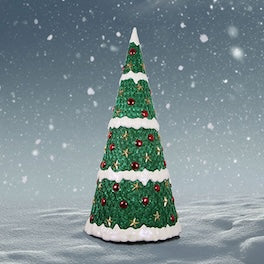Christmas Trees
Christmas trees for displays during the holidays are one of the most popular emblems of the Yuletide season for a variety of historical and cultural reasons. The tradition of using evergreen trees to symbolize eternal life and renewal was a custom of ancient peoples the world over. This symbolism was later adopted by Christians in the west. Thus, the modern Christmas tree carries meanings both religious and secular. While live Christmas trees remain popular for both indoor and outdoor displays, nowadays metal and fiberglass Christmas trees and other stylized Christmas trees are gaining in popularity.



































